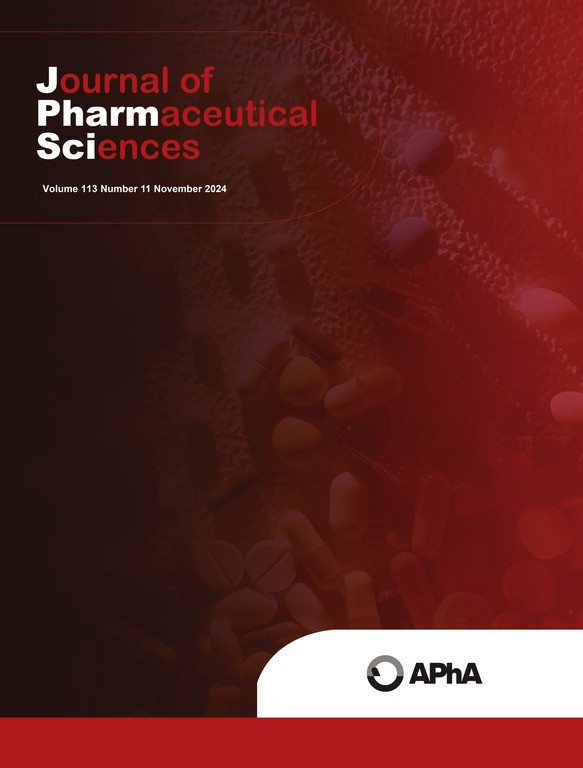pH-sensitive sulfasalazine release from green-synthesized mesoporous Fe3O4@SiO2 nanocomposites using Opuntia ficus-indica extract
IF 3.7
3区 医学
Q2 CHEMISTRY, MEDICINAL
引用次数: 0
Abstract
This study presents the green synthesis of mesoporous Fe3O4@SiO2 nanocomposites using Opuntia ficus-indica extract for pH-sensitive delivery of sulfasalazine. The synthesized nanocomposites exhibited well-defined spherical morphology with particle sizes ranging from 80 to 120 nm and superior superparamagnetic properties with a saturation magnetization of 75.8 emu/g. X-ray diffraction analysis confirmed the formation of a pure magnetite phase with an average crystallite size of 17.37 nm, while nitrogen physisorption revealed a high specific surface area of 165.8 m²/g with uniform mesopores centered at 4.2 nm. The nanocomposites demonstrated exceptional drug loading characteristics with 81.1 % loading efficiency and 23.9 % loading capacity. pH-dependent release studies showed enhanced release under acidic conditions (82 % at pH 3.5) compared to physiological pH (50 % at pH 7.4), indicating potential for targeted drug delivery applications. Cytotoxicity studies using L929 cells and peripheral blood mononuclear cells (PBMCs) revealed remarkable biocompatibility at concentrations up to 200 µg/mL over 72 h. These findings establish the potential of green-synthesized mesoporous Fe3O4@SiO2 nanocomposites as efficient carriers for pH-sensitive drug delivery systems, offering an environmentally friendly approach to developing advanced therapeutic platforms.

利用无花果树提取物合成的绿色介孔Fe3O4@SiO2纳米复合材料中ph敏感性磺胺嘧啶的释放
本研究提出了绿色合成介孔Fe3O4@SiO2纳米复合材料,利用无花果树提取物ph敏感递送磺胺嘧啶。合成的纳米复合材料具有良好的球形形貌,粒径在80 ~ 120 nm之间,具有良好的超顺磁性,饱和磁化强度为75.8 emu/g。x射线衍射分析证实形成了一个平均晶粒尺寸为17.37 nm的纯磁铁矿相,而氮物理吸附显示其具有165.8 m²/g的高比表面积和均匀的介孔,介孔中心为4.2 nm。纳米复合材料的载药效率为81.1%,载药量为23.9%。pH依赖性释放研究表明,与生理pH (pH 7.4时50%)相比,酸性条件下(pH 3.5时82%)的释放增强,这表明靶向药物递送应用的潜力。使用L929细胞和外周血单个核细胞(PBMCs)进行的细胞毒性研究显示,在浓度高达200µg/mL的72小时内,其生物相容性显著。这些发现证实了绿色合成介孔Fe3O4@SiO2纳米复合材料作为ph敏感药物递送系统的有效载体的潜力,为开发先进的治疗平台提供了一种环保的方法。
本文章由计算机程序翻译,如有差异,请以英文原文为准。
求助全文
约1分钟内获得全文
求助全文
来源期刊
CiteScore
7.30
自引率
13.20%
发文量
367
审稿时长
33 days
期刊介绍:
The Journal of Pharmaceutical Sciences will publish original research papers, original research notes, invited topical reviews (including Minireviews), and editorial commentary and news. The area of focus shall be concepts in basic pharmaceutical science and such topics as chemical processing of pharmaceuticals, including crystallization, lyophilization, chemical stability of drugs, pharmacokinetics, biopharmaceutics, pharmacodynamics, pro-drug developments, metabolic disposition of bioactive agents, dosage form design, protein-peptide chemistry and biotechnology specifically as these relate to pharmaceutical technology, and targeted drug delivery.

 求助内容:
求助内容: 应助结果提醒方式:
应助结果提醒方式:


